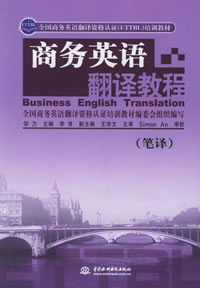职业翻译与有效的知识转化 (II)
作者:古龙 2009-07-04




语际翻译公司 转载请注明https://www.scientrans.com
∗本栏目部分文章内容来自互联网,部分已经过本站编辑和整理,如有版权事宜请联系Email/MSN jesczhao@hotmail.com
INDIRECT STRATEGIES
1. Metacognitive Strategies
a. Centering your learning (overviewing and linking with already known material, paying attention, delaying speech production to focus on listening)
b. Arranging and planning (finding out about language, organising, setting goals and objectives, identifying the purpose of a language task, planning for a language task, seeking practice opportunities)
c. Evaluating (self-monitoring, self—evaluating)
2. Affective Strategies
a. Lowering your anxiety (using progressive relaxation, deep breathing or meditation, using music, using laughter)
b. Encouraging yourself (making positive statements, taking risks wisely, rewarding yourself)
c. Taking your emotional temperature (listening to your body, using a checklist, writing a language learning diary, discussing your feelings with someone else)
3. Social Strategies
a. Asking questions (asking for clarification or verification, asking for correction)
b. Cooperating with others (cooperating with peers, cooperating with proficient users of the language)
c. Empathising with others (developing cultural understanding, becoming aware of others' thoughts and feelings)
Source: Oxford (1990). Language Learning Strategies—What Every Teacher Should Know.
New York:Newbury House Publishers
2. Finding one's own solutions to the problems identified and carrying them out (cognitive strategy)
Problem identification comes under the metacognitive strategy, but here, the participants moved one step forward. They used cognitive strategies to solve their problem. All five participants, using the TAP technique, found that some sentences in the English language scientific texts were very long and confusing, and found such complex sentences very difficult to translate into the Malay language, which has a different pattern of grammar. If they were to maintain the complex sentences in the Malay translation, the target readers might become confused. In an effort to overcome this problem, they found a solution. They decided to divide the complex sentences into two shorter sentences for easier analysis and comprehension. In this way, the translation process became more manageable and simpler. The meaning was communicated much more easily and accurately and the participants were satisfied with their completed translated version in the Malay language.
3. Using the discrimination strategy to choose the closest equivalent term from two or three alternatives identified in the target language based on the context of the situation (contextual meaning) and the culture of the target readers (cognitive strategy).
A word may have many meanings in different situations, so, the participants had to decide on choosing the most appropriate equivalent terms in their translation for the terms given in the English-language scientific source text. For this, they had to choose from a number of alternatives identified, using the discrimination strategy. The equivalent term which is finally chosen was also based on the context of the situation or contextual meaning of the text and the culture of the target readers, so that the target readers of their translated versions would not get confused. Some examples taken from the TAPs analysis of the five cases are as follows:
a. For the word "responsible", the participant had to decide between the two terms
tanggungjawab and berperanan; she chose berperanan as it suited the scientific context, whereas tanggungjawab is used for people in a social sense.
b. For "emotional response", the participant had to choose between
gerakbalas or tindakbalas; she chose the former as it suited the context of the situation or the contextual meaning of the text, whereas the latter is used in the context of a chemical reaction and was thus not suited to the text.
- 评论
- seme:文章内容文章内容文章内容文章内容文章内容文章内容文章内容文章内容文章内容 章内容文章内容文章内容文章内容文章内容
- seme:文章内容文章内容文章内容文章内容文章内容文章内容文章内容文章内容文章内容 章内容文章内容文章内容文章内容文章内容

- 谈翻译观念的嬗变与翻译技能的训练
2009-6-15 15:33:10 - 《高等学校英语专业英语教学大纲》中规定,大学生通过四年的在校学习,“能运用翻译的理论和技巧,将英美报刊上的文章以及文学原著译成汉语,或将我国报刊、杂志上的文章和一般文学作品译成英语……。译文要求忠实...
- 翻译与网络营销
2009-6-11 0:02:31 - Translation and Your International E-Commerce Strategy Most businesses realize that they ...
- 第四届IEEE生物信息与生…
2009-6-30 19:42:01 - 基本信息 主办单位: 四川大学,IEEE生物医学工程协会(EMBS) 承办单位 开始日期 2010/06/18 结束日期 截稿日期 2009/1...
- 第九届全国光电技术学术…
2009-6-30 19:35:58 - 基本信息主办单位: 中国宇航学会光电技术专业委员会承办单位 开始日期 2009/11/01结束日期 截稿日期 2009...
















